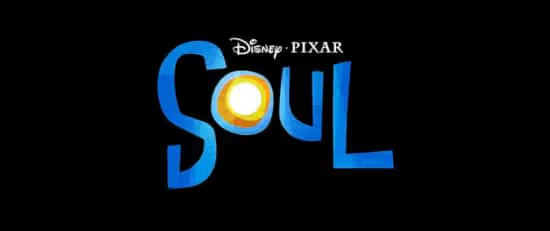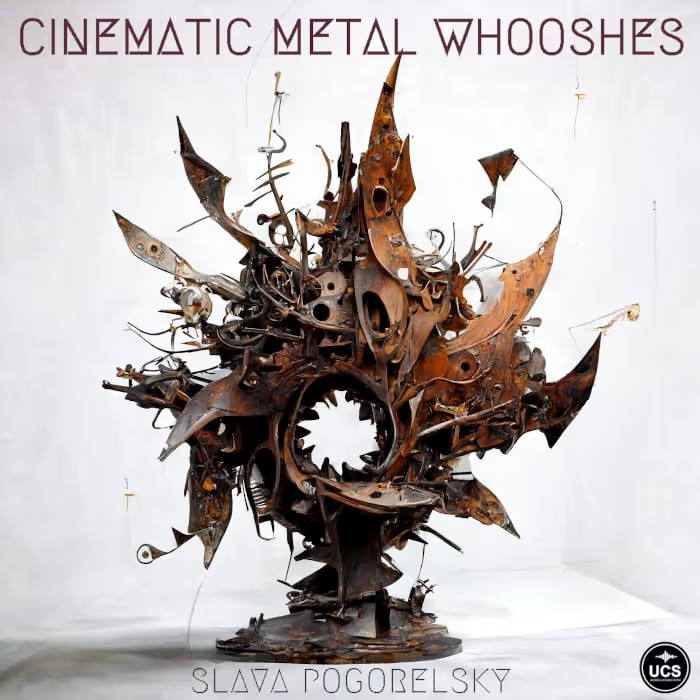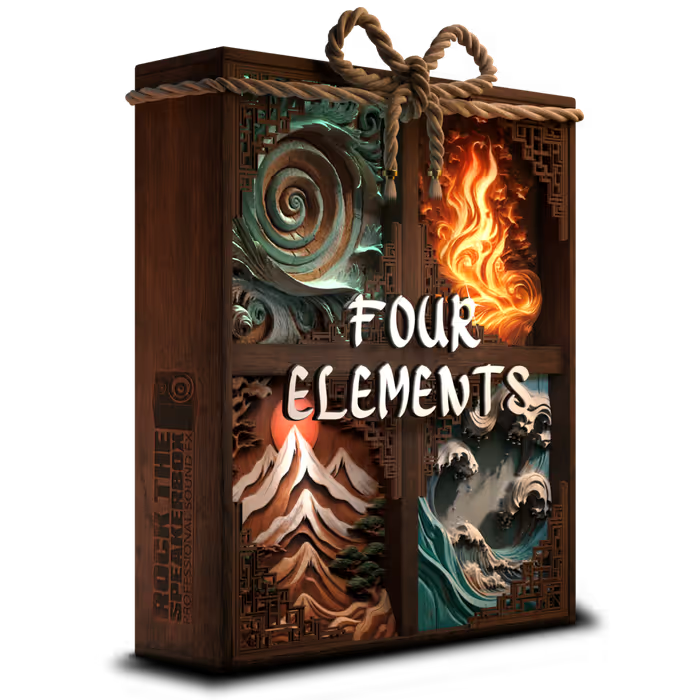“W hy are we here, what’s life all about?” asked Monty Python’s comedy team back in 1983. What is the meaning of life? It really is an age old question that we’re still asking.
It’s certainly the subject of Pixar’s latest animated film Soul. The story follows middle school music teacher and jazz musician Joe Gardner who scores the gig of a lifetime but before the big performance, he falls down an open manhole and goes into a coma while his soul travels to the ‘Great Beyond.’
Instead of willingly going toward the light at the end of the tunnel, Joe tears a hole in the fabric of space/time and jumps through. He’s transported to the ‘Great Before’ (or rather the ‘You Seminar’ as it’s rebranded), where new souls receive their personalities and interests and find their ‘spark’ before making their way down to earth. There, Joe gets paired up with 22, an unborn soul who has no interest in having a life. Joe tries to help 22 find a spark of their own and in doing so, discovers deeper meaning to his own life.
It’s a wonderfully weighty and philosophical story that’s presented with whimsy and humor and heart in that uniquely Pixar way.
In terms of sound, the score is the driving component. Original jazz compositions written by John Batiste mostly occupy the Earthly realm in New York City, and are contrasted with ambient, electronic cues composed by Atticus Ross and Trent Reznor that play during Joe’s trip to the philosophical realms, like the ‘Great Beyond’ and the ‘Great Before.’
Here, supervising sound editors Coya Elliott and Ren Klyce, who worked on the film at Skywalker Sound, talk about creating tonal sound design elements that play nicely with the score, like the sound of Terry (the accountant responsible for counting the souls in The Great Beyond) changing form as she travels around New York City in search of Joe and 22. They discuss the vocal treatment on the ‘lost souls’ and talk about the importance of keeping that treatment and others intact for the foreign language versions of the film. They share stories about recording the unborn souls’ vocals, and so much more!
Disney and Pixar’s Soul | Official Trailer | Disney+
Who was your point person on Soul? Was it directors Pete Docter and Kemp Powers? And what were some of the initial thoughts they had in terms of sound?
Coya Elliott (CE): Actually, we were in communication with the whole team. Ren [Klyce] spent time at Pixar working with Kevin Nolting (picture editor), and directors Pete Docter and Kemp Powers and producer Dana Murray.
It’s a very collaborative team. Those are only a few of the names, but those were definitely the point people.
Ren Klyce (RK): We were in contact with all the people that Coya mentioned, for sure, and our post producer Jesse Thiele Schroeder. In terms of creative collaboration, certainly there was the day-to-day with Kevin Nolting (picture editor) and then, of course, we would do check-ins with Pete and the team.
The initial meetings were with Pete early on — about two years ago — and his first big concern was what does the ‘Great Beyond’ sound like? He wanted the sound of the ‘Great Beyond’ to feel different than planet Earth and New York. He wanted there to be a sense of awe and a mild sense of foreboding, but he didn’t want it to also be scary.
Like to listen? Go behind the superb sound of Pixar’s Soul in this A Sound Effect audio interview with supervising sound editor Coya Elliott, and re-recording mixer, sound designer and supervising sound editor Ren Klyce (starts at 04:03):
[Pete] wanted there to be a sense of awe and a mild sense of foreboding…
And then to make it even more complicated, at the end of the film, he wanted that same sound to feel warm and inviting when Joe ultimately relinquishes and let’s go and is ready to go into the ‘Great Beyond.’
Pete wanted that sound to be the same in the beginning and end, yet somehow, in the beginning it feels scary or ominous, and at the end it feels warm and inviting.
So that was the first thing he set us on to create sonically for him.
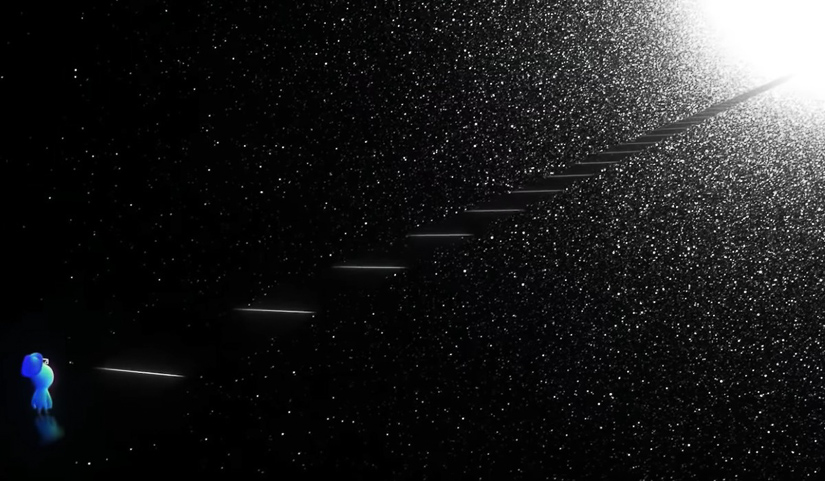
And Coya, what was one of the first things that you started to work on when you joined the film?
CE: The first thing I did was to get started with our Foley department. We had our Foley editor, Thom Brennan, come on and spot, and our second Foley editor Dee Selby. Then we worked with the Foley Artists, John Roesch and Shelley Roden, to make sure that they were up and running. (Our Foley Recordist was Scott Curtis.)
I loved cutting the ship movement and the ship sinking.
The reel that I cut was the end sequence (reel five) right after Joe falls back into the ‘You Seminar,’ i.e., the ‘Great Before.’ And I worked my way through that reel, which was a little bit of the ‘Great Before’ and then the club, Joe back at his apartment (Epiphany) and then when we’re chasing after 22 when we realize that she’s a ‘lost soul.’ That sequence was really fun. I loved cutting the ship movement and the ship sinking.
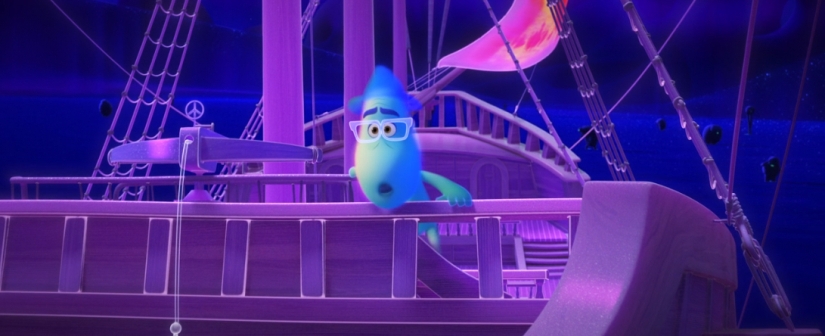
This is such a music-driven film. You have the original compositions from jazz musician John Batiste, as well as the electronic score from composers Atticus Ross and Trent Reznor for those more philosophical areas in the film, like the ‘You Seminar’ and the ‘Great Beyond.’ How did the music impact your approach to the sound design?
RK: The music was the number one most important thing to Pete when we started in the early days, about two years ago. Two plus! It’s close to three years when I’m thinking about it because that’s when he first started to think about the soundtrack.
Pete has wonderful composers that he works with — Michael Giacchino being his main composer that he loves to collaborate with— and Michael had done the last film, Inside Out, prior to this. So we all just assumed that Pete would want to work with Michael again, and he did, but then he started thinking about the music and how it would relate to the jazz music that John Batiste was going to be composing.
…Trent and Atticus…come from such a different place, musically, with darker sounds.
Pete was interested in exploring the idea of Atticus and Trent as composers as he wanted to try something new in a Pixar film. What led to Pete’s decision to go with Trent and Atticus was that they come from such a different place, musically, with darker sounds.
I believe Pete was interested in getting a team of creative people together and tasking them with things that maybe they’re not so comfortable with, and having Trent and Atticus as part of this equation I think was a great creative idea.
And I think that it also showed a wonderful contrast, the music that Trent and Atticus did versus John Batiste’s music. Both scores really work well together, but they also completely contrast one another.
One of the very first pieces of music that came up on the list of important cues was the one at the very ending, this piece of music called “Epiphany.”
“Epiphany” is the piece of music where, after Joe gets his life back and he has his wonderful performance with Dorothea, he’s euphoric but he realizes that something is missing. He thought that the answer to life would be that he would get this gig and he would be fulfilled. But instead, he realized that getting the gig of his lifetime had nothing to do with being happy.
And he has this epiphany as he sees the world through his own eyes while 22 was in his body. It’s a wonderful concept because he starts having these memories that are not his memories; they’re her memories. And that piece of music was very important to Pete and Kemp that it started off being John Batiste playing, but then it would slowly become a piece of music that Trent and Atticus would compose that then would slowly go back to a piece of music that John Batiste would perform and compose. So that was a very tricky piece and that one took a long time for everyone to figure out how to make that work. That, of course, coupled with all the imagery and the picture editing and all of the decisions of that sequence to make it an interior monologue and make it mostly music.
…there was a moment where we played that scene completely just music…
In fact, there was a moment where we played that scene completely just music, but then Pete started to realize, “You know, the last film I did that same thing in was at the very beginning of Up.” Michael Giacchino had written this beautiful piece of music and the team that worked on that film had this beautiful sound design for all the sequences, but then in the end, they went with music and it was very, very powerful.
Pete wanted to have the same kind of emotional feeling, that was similar to Up in this epiphany sequence in Soul but he didn’t want it to be exactly the same.
…music was definitely there all the time and always dovetailing in between sound and jazz and score…
We ended up adding very few sounds to the flashback memories of Joe’s life as he was growing up and seeing his mother and being a baby and looking up into his mother’s eyes as she bathes him in the bathtub, and being with his father and riding his bicycle, and that’s intercut with the memories of 22, which, even though Joe’s body is an adult, he’s seeing what she saw somewhat like a child — seeing the people on the street, eating the pizza for the first time and how wonderful it tasted, smelling the air for the first time, seeing the seed fall down from the tree and catching it in her hand, which was his hand. All of these things were very high concept ideas that Pete and Kemp were trying to give the audience without being too heavy-handed.
So to wrap all the way back to your question about music: music was definitely there all the time and always dovetailing in between sound and jazz and score and that took us a while to figure out.
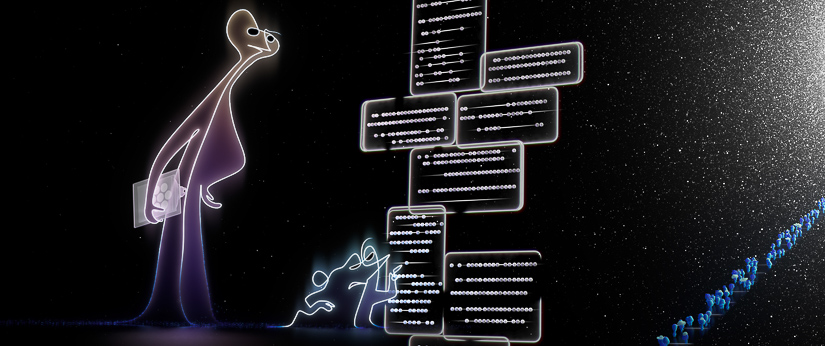
There are some musical sound design elements in Soul — for instance when Terry goes to the earthly plane to track down 22 and Joe. Her movement sound is tonal. When you were creating that sound were you concerned that it might contrast with the music or rub in any way?
RK: Yes. We were constantly worried about harmonic dissonance between the musical sounds of the effects versus the music score or the jazz music. We were always paying attention to those tones.
We were constantly worried about harmonic dissonance…
For example, in the ‘Great Before,’ we had made the sound effects in a similar key to the music that we had at the time, which was not Trent and Atticus’s. It was a temp track. And then when Trent and Atticus wrote their piece, it was in a different key. And so we had to actually make adjustments to the key of certain scenes to fit the new music that they were doing that was coming in.
So yes, with Terry and with other numerous areas that had tonal sounds, we were always listening to make sure we weren’t clashing harmonically.
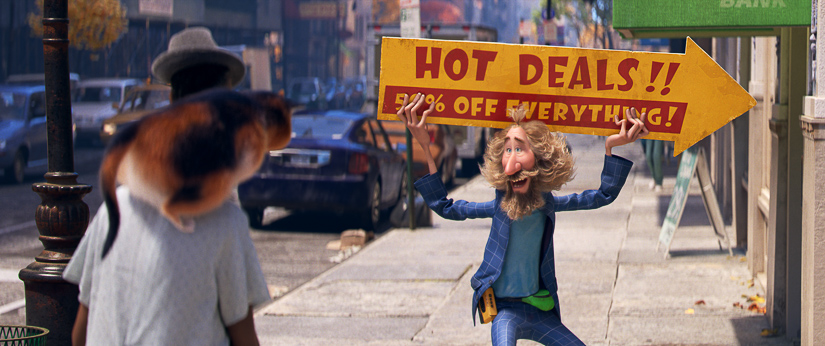
Was it something the composers would point out, too? If something sounded okay to you, but maybe rubbed them the wrong way, would they suggest that you pitch that a little down or a little up?
RK: I’m sure they would have if they were there with us, but sadly, we hit the mix of this film during the COVID lockdown. And so we weren’t able to have anyone come visit us and be with us in what would be normally a proper mix, collaborative experience. So I’m sure if they were there they would, and maybe they still have notes that we never got. But we tried as best as we could to send them our mixes as we are working on them and get feedback.
[Pete and Kemp] are very musical and have a very sharp musical ear.
Pete is a musician, as well as Kemp. Both of them are very musical and have a very sharp musical ear. And Pete would often catch harmonic rubs. He’d go, “That sound seems a little low.” Or, “That seems a little high.” Pete would often flag certain things, but we try to get it done ourselves as best as we could.
What was great about working with Trent and Atticus is we had a lot of their music for a long time so we could build our sound around their music.
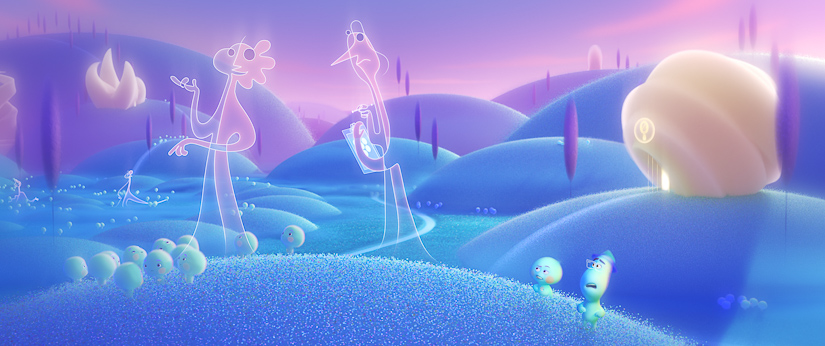
The sound of the unborn souls was so adorable! But, they say in the biz that it’s always challenging to work with kids and animals. So was it challenging to get all of those kid vocals and laughs without getting actual words from them?
CE: Our dialogue editor, Cheryl Nardi, she ran the loop group sessions. She is great with kids and just had such a great time working with the kids.
There was that worry, like, how do we get the kids to speak in gibberish but without making it sound like gibberish? You know?
…how do we get the kids to speak in gibberish but without making it sound like gibberish?
Some of the English lines were actually recorded when she was up in Vancouver for Toy Story 4. So, they had that to work with, and then all the gibberish and vocalizations were done in 2020, right before the lockdown happened.
Everyone was really happy with all the vocals that they did. Just adorable. She has so many great stories about coaxing the kids and getting them to relax in front of the mic. And some of the younger ones just did a fabulous job.
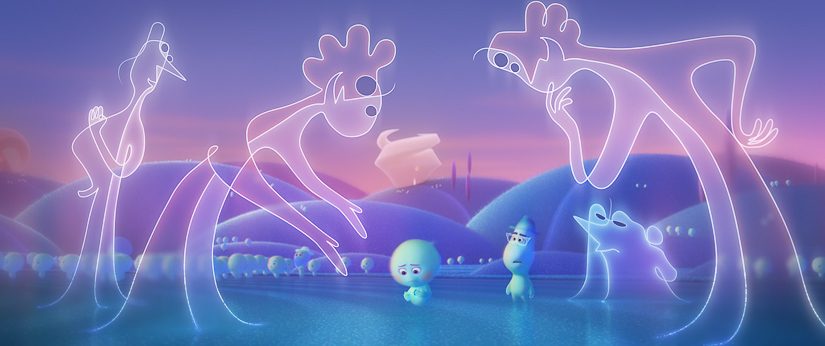
I’m so glad that it happened before the lockdown, because that would have really complicated the whole issue, having to record the kids’ vocals remotely …
CE: Yeah, just being in person makes things so much easier. I know crews now are able to do loop group remotely, but it’s definitely a different style, a different way of working, especially with children too.
RK: Cheryl is very skilled at coaxing and getting great performances out of people, particularly children, and she’s just so much fun to be around. Jesse Schroeder and Jeremy Slome, from Pixar, were wrangling all the logistics of how we were going to record the loop group. They just love Cheryl. In fact, Jeremy and Cheryl turned into best friends and it’s because Cheryl is so much fun. She can make everybody in the room feel so comfortable, happy. And she’s very charming.
…the performances of these kids — are so good because [Cheryl] just coaxed these performances out of them…
It’s no doubt that that’s why the sounds — the performances of these kids — are so good because she just coaxed these performances out of them and she’s got this great way of going, “Come on, you can do it!” She has this huge smile and she can just pull the stuff out of people. That is really a skill.
CE: She’s very playful. A kid at heart!
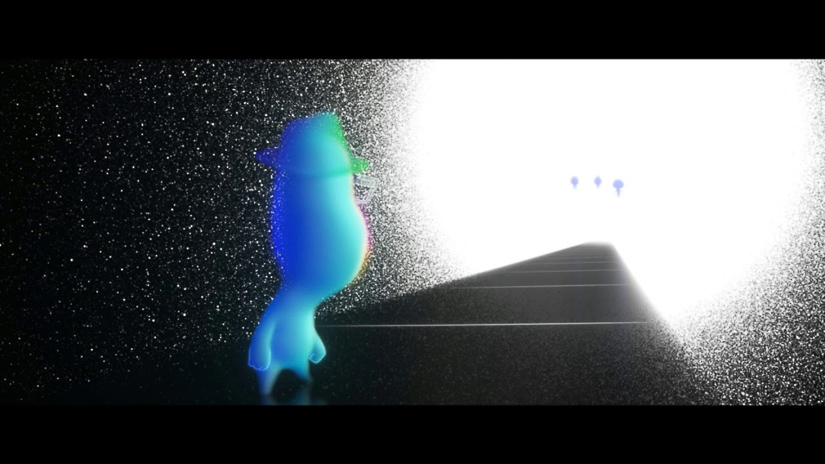
The light at the end of the tunnel, as it were, in the ‘Great Beyond,’ is that a bug zapper? It’s hilarious! A perfect choice!
RK: I’m glad that you think it’s a bug zapper because it is a bug zapper. And that was the second sound that Pete asked for nearly three years ago.
Your soul goes into the ‘Great Beyond’ and goes zap! What is that sound?
We explored all sorts of different sounds and it’s such a huge, big ball of white light, with such a dramatic concept of dying behind it. So, the initial sounds were very dramatic and intense: with some reversed thunder and deep explosive booms.
So, the initial sounds were very dramatic and intense…
Pete listened through a bunch of different options and he was concerned that it would be too much for young viewers. And also he wanted to have a sense of playfulness and humor.
And it was actually his idea. He thought, “Well, what if we just have this sound that’s intense, intense, intense, and all of a sudden… ‘buzzt.'”
It’s almost anti-climactic and because of it being anti-climactic, there’s a small sense of relief and even humor and comedy that maybe we laugh at it, or at least not be afraid of it.
So yes, it’s a bug zapper.
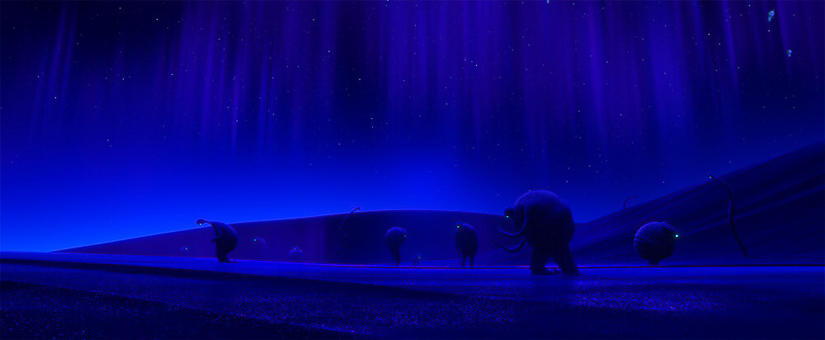
Let’s talk about the ‘lost souls.’ There’s this one scene where you hear this muffled, droning voice repeating something. And then it’s revealed that the guy’s actually saying, “make a trade,” after they have reawakened his soul. What was your processing on that ‘lost souls’ vocal sound?
RK: For the sound of the “make a trade,” Kevin had a temp version of a voice treatment in his Avid that gave us the idea. Oftentimes when we’re working with Kevin and Pete, there’ll be some sort of rough idea of what it’s supposed to be with the caveat: “Here’s just a quick idea. We want it to be more nuanced than that, but here it is.”
The task was to have it sound human but to have it sound a little strange and unintelligible and constantly repeating. Only at the end would it be slowly revealed to us that the ‘lost soul’ was saying “make a trade.”
The task was to have it sound human but to have it sound a little strange and unintelligible and constantly repeating.
We have these plug-ins that we use and there’s this one wonderful program made by IRCAM called Trax. What it allows you to do is take any dialogue line and really bend it — not just pitch, but with formant – structure, tone, and nasal and throat length.
You can bend and change certain parameters of a vocal without changing other parameters. And by finding these weird moments to pitch some words down and making it nasal and more glottal, we came up with a sound. It was a combination of this program and another program that made this vocal sound.
In the end, we crossfaded that into the natural actor’s voice going, “make a trade, make a trade, make a trade.” And Pete loved it and he was very happy. That was presented early on because it was one of the important sounds that we wanted to make sure we had right at the beginning.
But then when we kept working on the scene, Pete said, “Hey, I know I approved that, but it just sort of sounds like you are crossfading from one sound to the next. Is there any way that you can actually make the muffled sound change in itself to go to the natural sound?”
So the effect is a gradual transition from a muffled vocal into “make a trade.”
And that was a little tricky transition. So right at that transition, we took the IRCAM-processed vocal and we start pitching it up a half-step higher and a half-step higher, half-step higher, half-step high and then slowly manipulated those half-step higher vocals, getting less effected until it then crossfaded into the natural voice. So the effect is a gradual transition from a muffled vocal into “make a trade.”
And then at the very ending, we have a different performance of the actor where he has a realization. He goes, “Make a trade. Make a trade. Make a trade?” Like, “Is that what my life is all about?”
At the very ending, there’s an actual change in his read that Kevin had cut in his Avid early on and we kept that.
So yes, a lot of little tricky moments. We’re really glad that you picked that one up as something to talk about for sure.
Later on, of course, that recapitulates into the different scenes where we see “Got to find it, got to find it, got to find it…” and all the other voices that happen through there.
…we could then share the settings that we devised with our foreign teams.
One of the nice things about being in this modern age is that because we created this preset using this program we could then share the settings that we devised with our foreign teams. So when the language gets dubbed into German or Spanish and all the other languages, that same sound can be applied to every language. We gave very specific instructions on how we did the transition and so forth.
I just recently watched the Spanish version of the film and I’ve been really enjoying hearing that processing even in different languages. The team, led by Jens Christensen and his team at Pinewood, did an amazing job of doing exactly what was done in the English version.
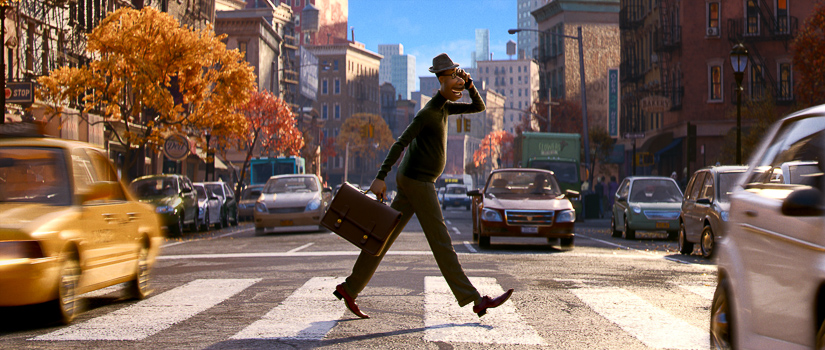
That’s really fantastic because the international market is huge and giving that same film experience to non-English speaking audiences is just awesome for them and for you guys too…
RK: Normally, one of us goes every year to help when they have questions. We went a few years ago on The Incredibles. It’s great to meet Jens and his team and to see how they work together.
They have a database and each team is in a different room and they’re all sharing a common Pro Tools session. As things get tweaked, they all inform each other on a checklist. It’s an incredibly complicated process that they do, and they don’t get enough credit for it. I’m really glad that we’re talking about them.
…they’re very conscientious about wanting to do it exactly how we’ve done it…
And yes, it’s a huge part of the market, and it’s important for the film and how the film is perceived in different countries, in different languages, and enjoyed.
CE: Yeah, I wanted to give a shout out to them too, because towards the end of the final mix, we start to field lots of questions from them and they’re very conscientious about wanting to do it exactly how we’ve done it — what did we do for this and what do we do for that? So it’s another great collaboration.
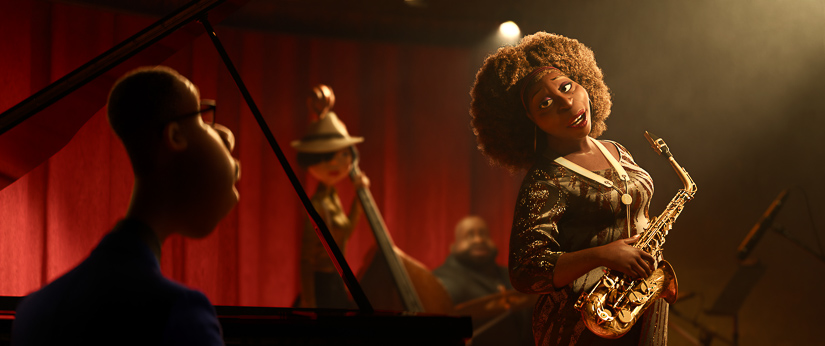
I love that there’s been an evolution from crappy overdubs into this process of globalization. I love that this transition has happened…
RK: Totally. The fact that you love it makes us super happy.
Jens’s team also matches reverbs and panning, like the sound of the dialogue, for example, of the mentors that David Parker (and Nathan Nance actually helped with the pre-mix of those sounds) had done. Early on, Pete wanted the sound of the counselors to sound a little bit different than Joe’s voice, but he didn’t want them to sound pitched down — like the way that the ‘lost souls’ sounded. But, he wanted them to sound different. We came up with a technique of spreading their dialogue — not just in the center where we normally put it, but a little bit on the left, a little bit on the right and then adding reverb and delays and these very specific articulations of their voices to kind of give them a little bit bigger-than-life sound without making them sound like monsters.
It is wonderful we were in that new territory where we can really collaborate and share what we’ve done.
Getting back to the foreign dub, all of those presets and how much divergence on the panning of the dialogue and so forth and the actual presets of the reverbs even, we could share with the foreign team and they could replicate that sound for those dialogue bits as well.
It is wonderful we were in that new territory where we can really collaborate and share what we’ve done.
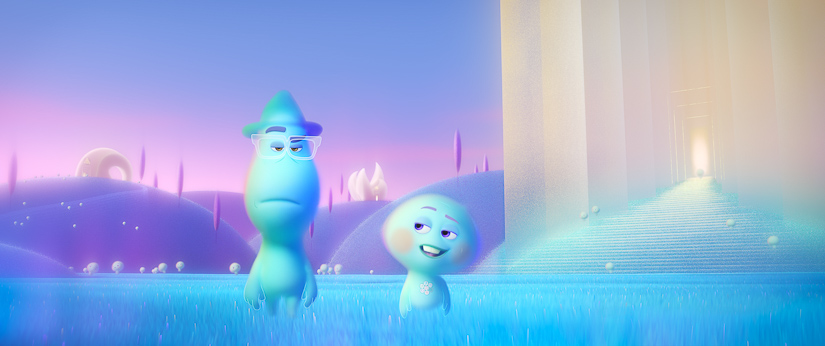
Because this is an enlightening film that makes you think about life in a whole new way, I wanted to take a philosophical turn for my last question.
What was one challenge or opportunity in Soul that helped you to grow as a sound artist and made you think about sound in a new way?
CE: I guess my first response would be: it teaches you to be patient. We have a great sound library to pull from and say we even go and record something new, and you think, “Okay, great, I’m going to use these sounds for the scene and it’s going to be great.” And then you start to cut the sounds and you realize, “Oh, that doesn’t work at all. Okay. Let’s step back. Let’s talk to Ren. Let’s play it for somebody else. Let’s use another sound.”
It’s kind of working with layers and then stepping back and being patient.
It’s kind of working with layers and then stepping back and being patient.
And also for me, honestly, a big one is: how do you receive it when it isn’t liked? What do you do with that information?
And you think of it as like, “Oh, okay. We’re all on the team together. It’s not like one individual making a mistake. It’s this whole collaboration.” If that makes sense.
RK: To Coya’s point, there are moments where everybody’s contribution (and what every single person on our team brings to their work) is very personal. There’s a meaning to it and sometimes, for whatever reason, we can’t have all of those sounds play and so there’s that moment where someone’s hard work isn’t audible and it hurts. You feel like, “Oh, why did I work so hard on that when it ended up being abandoned?”
We can still feel good about our work no matter what ends up happening and what ends up in the final mix.
And the big takeaway for me is that that’s okay. The contribution of each individual, in a way, sometimes those things can work together and oftentimes, however, the filmmaker just wants to have the audience focus on something that’s different than that. And it’s okay. We can still feel good about our work no matter what ends up happening and what ends up in the final mix.

